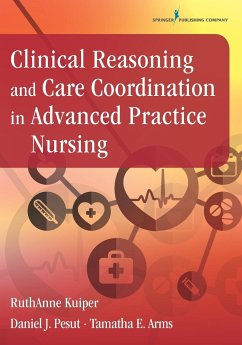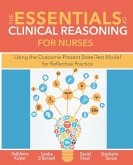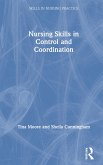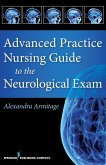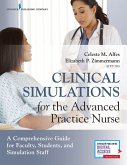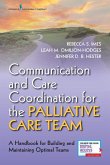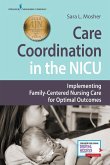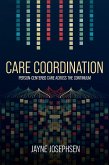Teaches students how to think like an APRN This book describes an innovative model for helping APRN students develop the clinical reasoning skills required to navigate complex patient care needs andcoordination in advanced nursing practice. This model, the Outcome-Present-State-Test (OPT), encompasses a clear, step-by-step process that students can use to learn the skills of differential diagnosis and hone clinical reasoning strategies. This method facilitates understanding of the relationships among patient problems, outcomes, and interventions that focus on promoting patient safety and care coordination. It moves beyond traditional ways of problemsolving by focusing on patient scenarios and stories and juxtaposing issues and outcomes that have been derived from an analysis of patient problems,evidence-based interventions, and desired outcomes. The model offers a blueprint for using standardized health care languages and provides strategies for developing reflective and complex thinking thatbecomes habitual. It embodies several levels of perspective related to patient-centered care planning, team-centered negotiation, and health care systemconsiderations. Through patient stories and case scenarios, the text highlights care coordination strategies critical in complex patient situations. Itprovides students with the tools to collect patient information, determine priorities for care, and test interventions to reach health care outcomes bymaking clinical judgments during the problem-solving process. Concept maps illustrate complex patient care issues and how they relate to each other. For faculty use, the text provides links to relevant APN competencies and provides guidelines for using the OPT when supervising students in field settings. Key Features: Delivers a concrete learning model for developing creative thinking and problem solving in the clinical setting Offers a blueprint and structure for using standardized health care languages Includes patient stories and case scenarios to illustrate effective use of the OPT model Highlights care coordination strategies associated with complex client situations with the use of the Care Coordination Clinical Reasoning model Reinforces methods of reaching a diagnosis, outcomes, and interventions and how to duplicate the process
Hinweis: Dieser Artikel kann nur an eine deutsche Lieferadresse ausgeliefert werden.
Hinweis: Dieser Artikel kann nur an eine deutsche Lieferadresse ausgeliefert werden.

